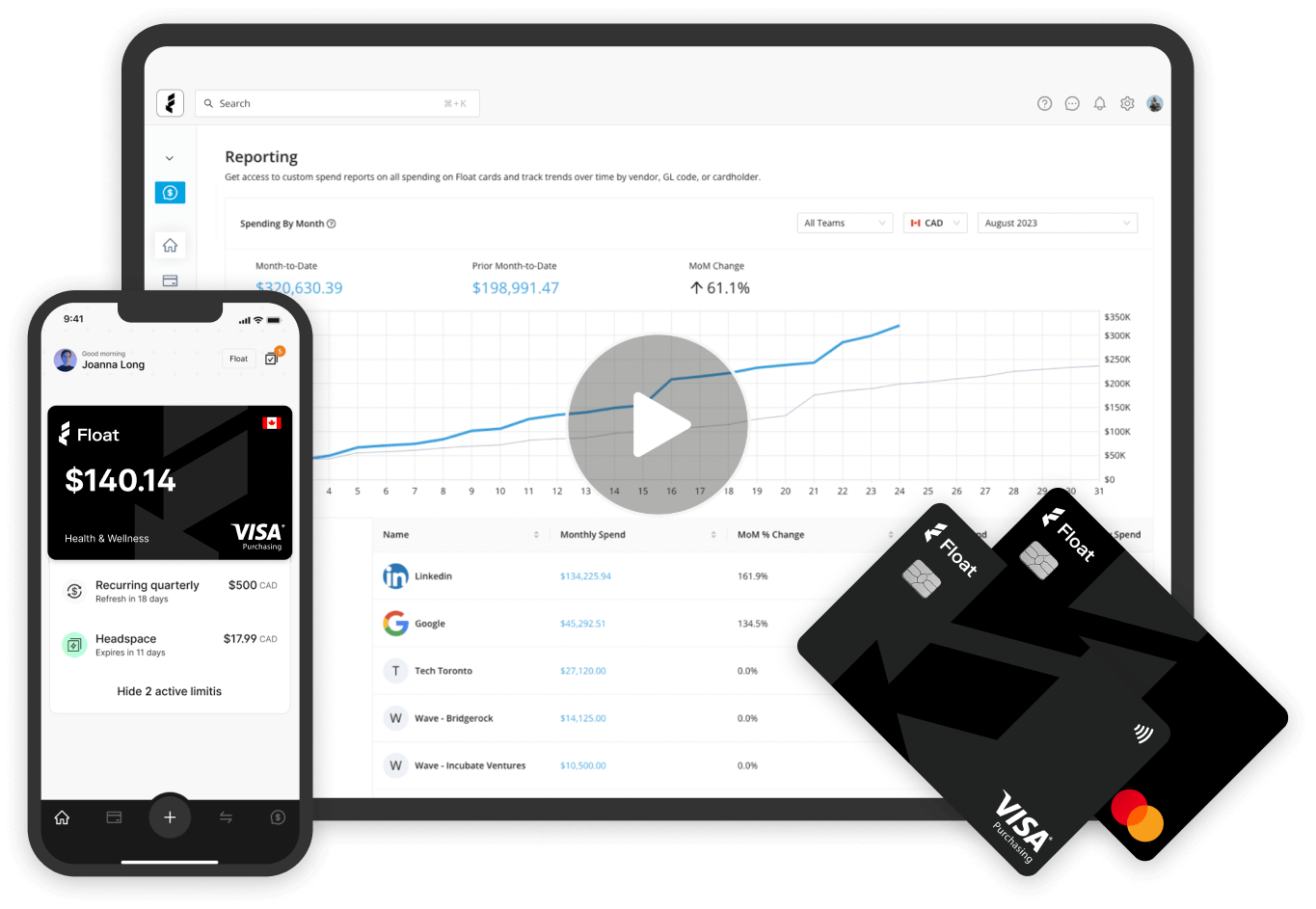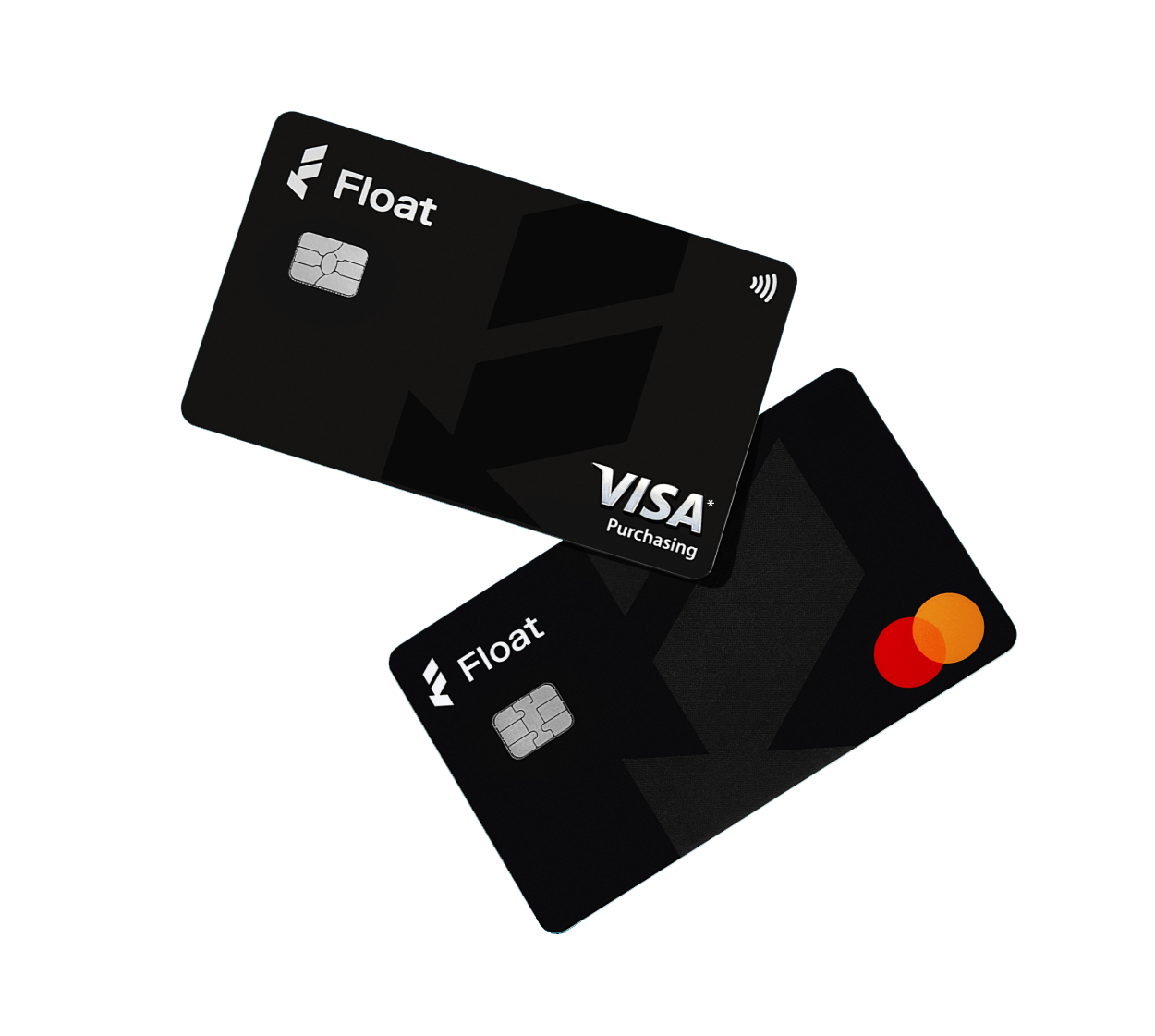Corporate Cards
Employee Offboarding Card Security: Best Practices Guide
Offboarding employees is never fun, but it can become even more of a headache if your card security is compromised. Here’s what you need to know.
August 1, 2025

An employee departure can be bittersweet, but it’s also a critical moment for protecting your business’s data and finances.
No matter the reason behind their departure, following employee offboarding procedures helps protect your company and prevent unauthorized access to accounts. Otherwise, their tether to the business can become a tripwire, leaving you vulnerable to security issues.
A key part of offboarding involves revoking access to corporate credit cards and financial systems. This minimizes the risk of unauthorized spending or data exposure.
It sounds simple, but how can your Canadian business deactivate corporate physical and virtual cards properly? What do you do if something is missed? In this employee offboarding card security guide, we’ll walk through several best practices you can put into action today and provide a checklist to keep your company secure after employee departures.
Why employee offboarding card security matters
Maintaining employee offboarding card security is just one step of many in the offboarding process, but it’s one of the most critical when it comes to your company’s financial security. The risks of not properly securing company credit cards during offboarding can lead to intentional or unintentional fraudulent employee spending, financial loss and data theft.
At this point, you might be thinking: “But my former employee would never intentionally do something like that!”
That may be the case, but corporate card data can get into the wrong hands if it’s not kept under lock and key. Employees may be less vigilant about keeping this data safe when they no longer work for your company.
Unintentional fraudulent spending comes in many forms. For example, an employee might use their corporate card to sign up for a monthly software subscription like a project management tool or design app for work. If the subscription isn’t paused and the card isn’t cancelled upon their departure, you keep getting charged with nobody using the software. And paying for Helen’s Canva Pro account three months after she’s left the company is an oversight you want to avoid.
A lack of card security during the offboarding process could also bring up compliance and regulatory concerns as well—a headache no one wants to deal with.
Best practices for offboarding card security
So, how can you ensure your corporate card program remains secure when an employee leaves the company? Here are the best practices for maintaining offboarding process security for corporate cards:
Communicate offboarding requirements to relevant stakeholders
Your IT, legal, finance and operations employees need to be made aware of your offboarding procedures, especially ones that pertain to corporate cards. Automate notifications of important information where possible.
Establish clear policies and procedures for card deactivation
This may include deactivating and cutting up physical corporate cards, deactivating virtual cards and removing sign-on access to digital systems where credit card information is kept.
Implement an IT offboarding checklist that includes card access revocation
Your IT team may be responsible for completing a number of security-related offboarding tasks. Ensure they are aware of the card access revocation process and have the necessary permissions for completing this task.
Monitor card activity during the offboarding process
Deactivating physical and virtual cards may take hours or days, depending on your card program. Be sure to closely monitor card activity leading up to and after offboarding to ensure your accounts are secure.
Act quickly to minimize risks
The early bird gets the worm, as the saying goes. If you are proactive in removing card access quickly during offboarding, you can minimize the risks of fraudulent spending and data breaches.
But things happen! Ensure you have a spend tracking solution in place. That way, if an employee is still spending after they are no longer working for you, you catch on—and can act—quickly.
Best business credit cards
Compare top options, fees and benefits for
Canadian companies.
Creating an effective card security offboarding checklist
Data protection during offboarding requires vigilance. You don’t want an important task to fall through the cracks and lead to a major security or financial issue. Keep this checklist handy to make sure you maintain company card security during offboarding:
- Notify stakeholders of employee offboarding as soon as possible. Use automated triggers so that key stakeholders, like finance, know when a corporate card has to be paused or deactivated.
- Revoke card access. Whether physical or virtual, ensure the offboarded employee no longer has access to the cards. You can pause or deactivate them. (Step-by-step details on that below!)
- Reassign recurring transactions. For business continuity without any hiccups, ensure any recurring transactions for services are reassigned to other corporate cards.
- Reroute approvals workflows. If the departing employee was part of a workflow for approving expenses, reassign their role to another team member to keep things moving.
- Enable streamlined account reconciliation and audit review. Capture any recent receipts from the departing employee for a smooth month-end.
- Review card history for any personal transactions. If the employee has made any recent personal purchases on the card, ensure you retrieve the funds before they depart.
- Manage vendor procurement for business continuity. Replace the departing employee as admin on necessary vendor accounts.
Assign responsibilities to specific individuals for each item on the checklist, while also specifying deadlines for each task. This way, you can increase accountability for your team (and minimize finger-pointing!). Where possible, automate processes to prevent manual errors from interfering. For example, automate email confirmations of card deactivations.
Keep in mind that the checklist is not set in stone. As your cybersecurity offboarding processes evolve, so too should your checklist. To maintain effective card security, update your offboarding checklist every four to six months to keep up with advancing technologies and internal credit card policies.
Securely deactivating and retrieving corporate cards
A key step in offboarding compliance for your corporate card program is securely deactivating and retrieving corporate cards. Here’s what you need to do:
1. Collect physical cards on or before the last day of employment.
2. Pause or destroy physical cards as soon as possible, such as by cutting them in half and disposing of them.
3. Pause or deactivate virtual cards on or before the last day of employment.
4. Remove corporate card information from any digital systems and employee profiles.
5. Contact card issuers to verify the deactivation on both physical and virtual corporate cards.
Monitoring for suspicious activity post-offboarding
You may feel like corporate card offboarding is complete once you’ve deactivated the cards, but that’s not always the case. To make sure your business’s security isn’t compromised, monitor for suspicious activity after offboarding is complete. Here’s how:
- Implement ongoing monitoring for unauthorized card use: Keep daily tabs on corporate card spending to ensure employees only make authorized purchases and meet company card policies.
- Take note of suspicious transactions: Set up alerts in your corporate card program so you are notified of any authorized spending and expense anomalies.
- Regularly review card statements and access logs: Look for any transactions that have been declined from the paused or deactivated card, as well as any transactions that don’t appear to fit within your tech stack or vendors.
- Have an incident response plan in place: Maintain employee offboarding card security by knowing what to do if you notice fraudulent spending or a data breach. The quicker you act, the better the result.
Keep your corporate card program under lock and key with Float
Don’t overlook employee offboarding card security and leave your business vulnerable to unauthorized spending or security breaches.
With Float’s corporate card program, you have full visibility into your team’s spending in real-time, along with custom controls to activate and deactivate cards instantly.
Discover how Float provides your business with the spending flexibility you need, all while keeping your finances secure. Book a demo today.
Try Float for free
Business finance tools and software made
by Canadians, for Canadian Businesses.
Written by
All the resources

Expense Management
Canadian Month-End Close Process: 2026 Best Practices Guide
Discover what month-close is, steps of the process, the most significant challenges and the best strategies to overcome them.
Read More
Expense Management
Effective Working Capital Management: 2026 Strategic Guide for Canadian Businesses
Let's explore how credit can help you manage your working capital needs more effectively.
Read More
Expense Management
Managing Travel Expenses for Growing Companies
Learn how to streamline manual work and empower your teams with a solid travel expense management process.
Read More




